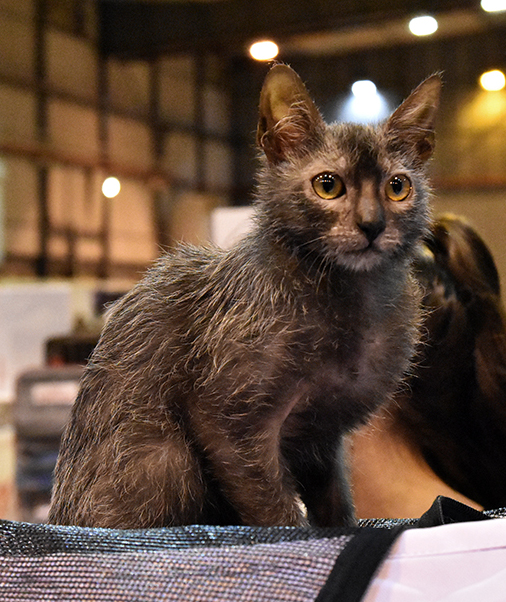Cat fancy, at least in its most basic form, goes back further than you might think. It began in England, as so many things did. The first documented cat show in England was in 1598, the same year that Shakespeare finally published
Much Ado About Nothing. The cat show was at the St. Giles Fair, but apparently it didn't attract much interest as it would be another 273 years before true cat fancy would take root in England. In 1871, a man named Harrison Weir organized a truly marvelous event. His cat show was hosted at London's Crystal Palace, and it wasn't just an event to show off your cats. Weir, being a gentleman of many talents, had spent considerable time on this event. He decided cats would be judged by judges, and he even wrote the Standards by which each of the breeds entered would be judged. Then he served as one of the three judges for the show. The show was a hit.
The breeds chosen for exhibition at shows in the 19th century were of necessity limited to those available in England at the time. There were Abyssinian and Manx, of course, but there were a couple more. The Royal Cat of Siam were permitted in both pointed and solid-chocolate colors. These cats were likely the descendants of the cats brought to England by the Romans so many centuries before. Longhaired cats were their own category, a category which included Persians, Angoras, and some of the cats from the colder climes of Russia. There were even classes for hybrid cats, if they were crossed between domestic cats and wild cats, and classes for the heaviest cats, gelded cats, and "Cats Belonging to the Working Men". This last class was quite literally for the working class of people. The entry fee was reduced, as was the prize money for the winners in that class.
This show was so popular that it led to more shows, which eventually led to the formation of the National Cat Club (NCC) in 1887. Harrison Weir was, naturally enough, the president of the NCC. The NCC, whose motto was "Beauty Lives by Kindness", served more than one purpose. It was a club, yes, but it was also a governing body. It spent a lot of time creating a national stud book and even created the first register to record the lineage of pedigreed cats. Since none of this had existed before, it took a great deal of time and effort to accomplish this. Harrison Weir published Our Cats in 1889 to showcase some of their work.
But of course, a rival would come along. The Cat Club (TCC) was founded in 1898 by Lady Marcus Beresford, among others. The TCC created its own studbook and register, so if you wanted to show your cats in both the NCC and TCC, you had to enroll them in both. This annoyed some fanciers, but it was what it was. There was considerable rivalry between the NCC and TCC for five years, but eventually The Cat Club disbanded.
Other cat clubs had popped up across England, though, which was just as annoying to cat fanciers. Eventually, all these various cubs in England agreed to amalgamate, and in March 1910 they formed the Governing Council of the Cat Fancy. This remains the oldest and largest cat association in Great Britain today. If you want to show cats in England, you register with the Governing Council of the Cat Fancy. They're where it's at, at least in Great Britain.



